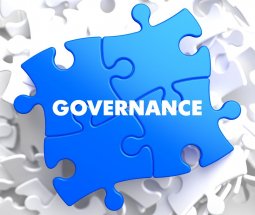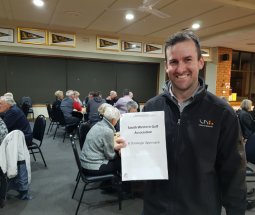Running an AGM
The Annual General meeting (AGM) is an important event for every organisation and an essential requirement for incorporated organisations. It gives its members, the general public and the committee a broad overview of the organisation's current directions and financial health and confirms its purpose. It is also the time to revitalise the organisation through the official engagement of members into key elected positions. Most importantly, the organisation should try to make the AGM a positive experience, ensuring that people go away firmly committed to the organisation and its goals.
Benefits of holding an AGM
An annual general meeting will assist your organisation to:
Comply with government regulations If you are an incorporated association, the legislation in most Australian states requires you to hold an AGM annually. Tasks that need to be carried out during the AGM can include:
- Elections – At the meeting you need to validly elect key office-bearers. Usually legislation will specify that you must elect a Public Officer. Depending on the size and nature of the organisation, the AGM is also the time to publicly elect the Chair, Deputy Chair, Secretary and Treasurer and other Board and management committee members.
- Presentation of Accounts – You will need to present the annual accounts to the members in a standard format. Again, legislation in most states provides that you must have your accounts audited if your budget is above a certain level. If you are below this level, you can still have your accounts audited; it may be more expensive, but it provides some assurance that nothing has been overlooked that is likely to damage the organisation. You will also have to appoint your auditor for next year so have your nomination ready by asking the person you wish to nominate.
- Documentation – Most Australian states require you to send in an annual report after your AGM. The content varies from state to state – some just want the accounts, some ask for a list of office bearers, some charge extra for the forms or the lodgement.
Preparation
The AGM is usually organised by the Secretary. It is important, though, that everybody in the organisation knows who is responsible. The date of the AGM may be set by legislation – e.g. within three months of the end of the financial year.
Advertisement: If you are an incorporated association, the legislation in most Australian states requires that you advertise your AGM with a specified lead in - check your Constitution as to the number of days and methods of advertising.
Board Members and Office Bearers: Confirm which of your current members and office bearers (Chair, Deputy Chair, Secretary, Treasurer) will be re-nominating for the coming year and who will be retiring. Check your constitution to see if anybody is ineligible to stand. If there are vacancies, make sure that you have approached people who are willing to fill them BEFORE the AGM and remember that there may be people who come forward at the meeting itself. Most importantly, try to ensure that you have enough good nominations to fill the available positions. If people are to be nominated in their absence, have them sign a document saying that they are willing to stand.
If you are required or decide to present an audit of your accounts at the AGM, leave enough time for the auditor to go through your books and prepare your accounts. Make an appointment well in advance; this is a busy time for auditors. Ensure that the auditor knows the exact date of the AGM. Have a nomination ready for the position of next year's auditor from somebody who you have approached and who is willing to act.
Publicity If you are intending to put on a bit of a show for your members or the press – with a guest speaker, a video showing, or an important announcement, for example – organise it well in advance so that you can be sure that everybody knows what they are supposed to be doing and you have all the necessary technical equipment in good working order.
Meeting papers
Prepare the following documents and post them out to all members and office bearers in advance of the meeting:
A set of accounts (balance sheet and financial statement) in the required format.
The Annual Report, containing:
- The accounts
- a summary of the year's activities
- a record of the year's achievements
- a preview of what is planned for the next year
- a re-statement of the organisation's vision.
An Agenda consisting of:
- Welcome by chairperson
- Apologies
- Confirmation of minutes of the previous AGM
- Business arising from the minutes
- Chairperson's report
- Treasurer's report and presentation of audited financial statement
- Election of Office Bearers
- General business
- Guest speaker (if any)
- Date of next meeting (if known)
- Close
- Minutes (the relevant minutes are the minutes from the previous AGM, not the previous Board meeting)
Meeting procedure
The procedures at the AGM are basically the same as those at an ordinary committee meeting.
Motions Motions must be moved:
- to accept the minutes of the last AGM
- to approve the Chair's report (the Annual Report)
- to approve the Treasurer's report (the Financial Statement
- to appoint ... as auditor for next year.
Motions must be seconded, and a vote (generally a show of hands) taken.
Nominations for Board members and office bearers must be called for from the floor. If more than one person nominates for any office, or if there are more nominations than there are places on the Board, there must be an election. An election can take place through a show of hands or by secret ballot. The only special procedural provisions at an AGM are that:
- the quorum may be different (consult your constitution).
- if the position of Chair is being contested, the Chair should stand down during the election and be replaced by an acting Chair (someone who is not standing for any position) specially elected just for the period of the election.
Guest speaker
Guest speakers can be people you want to impress during the meeting (an important funder, for example), or people you want to be impressed by at the meeting (an inspiring speaker, for example), or both.
After the AGM
Make sure that the minutes are written up shortly after the meeting. If (as sometimes happens) they are left to the evening before the mail-out for the new meeting, the Secretary may have difficulty finding last year's notes. Ensure that you send any necessary documentation, for example the audited statement and change of public officer, to the appropriate state/territory government department.
Retiring office bearers must hand over the operations to the new person, together with all documents, rubber stamps, bank details, etc. Retiring officers should also give their successors briefings describing key processes and current priorities and challenges.
Banking - If any of the people who are retiring from the Board are signatories to the organisation's bank account, try to have the necessary forms on hand so that the new signatories can be authorised after the meeting.

.jpg)

